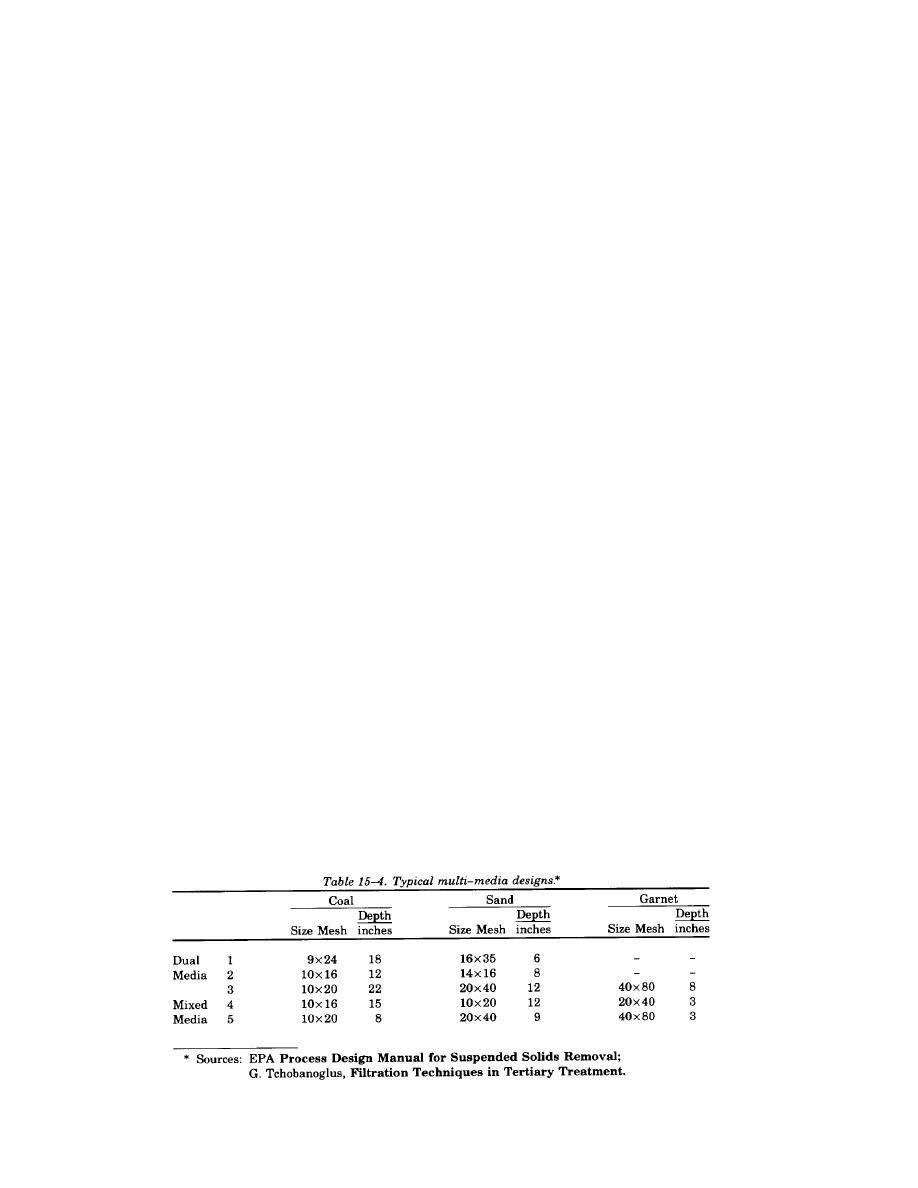
TM 5-814-3/AFM 88-11, Volume III
15-5. Filtration.
a. Basic design parameters. The basic parameters to consider are the following:
-- Type and size of filter media;
-- Depth of filter;
-- Rate, duration and timing of backwash;
-- Filter run duration;
-- Filtration rate; and
-- Type of chemical pretreatment dosage requirement.
b. Coarse-media filtration.
(1) General design consideration. Filter media size will influence filter performance; smaller media
will achieve better suspended solids removal, but will involve increased pressure drop and head loss buildup.
Therefore, a balance between removal efficiency and hydraulic loading rate must be attained. For sewage
applications, coarser media, higher flow rates and longer filter runs will be used. Chemical treatment of the
feed water may be necessary to improve effluent quality.
(2) Media sizes and filtration rate. Coarse media particles must have an effective size of
approximately 1.3 millimeters with a uniformity coefficient of approximately 1. Sand or anthracite coal may
be used, with coal giving a poorer solids removal but producing less pressure drop. Refer to the EPA Process
Design Manual for Suspended Solids Removal for additional information regarding media specification.
The design application rate for coarse-media filters will be 5 gallons per minute per square foot at design
maximum flow.
(3) Effectivenness. Single-media, coarse sand filters will be credited with 60 percent removal of
suspended solids when the sand media size is no greater than 1.0 millimeters and the flow rate is no greater
than 4 gallons per minute per square foot. Biochemical oxygen demand removal efficiencies will be dependent
on the biochemical oxygen demand fraction of the suspended solids that is removed since dissolved organic
materials generally pass through the filter.
c. Multi-media filtration. Multi-media filtration, as compared to single-media filtration, will provide
better suspended solids removal with longer filter runs at higher flow rates. A 75 percent suspended solids
removal efficiency with multi-media filtration will be an acceptable design allowance for a design application
rate of 5 gallons per minute per square foot. Filter aids such as alum can be used to increase removal
efficiency. An application rate of 6 gallons per minute per square foot at maximum design flow will be utilized
for design. Typical design parameters for multi-media filtration processes are given in tables 15-4 and 15-5.
15-8


 Previous Page
Previous Page
